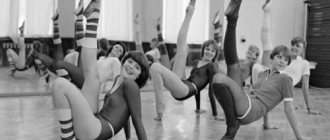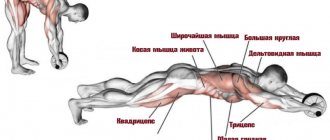Running is now more popular among women around the world than ever before. Women can run any distance, continue training during pregnancy, win races after giving birth, run into old age, and no one will even think to doubt that running brings incredible benefits to women.
But it was not always so.
In this article, we will recall the main moments in the history of women's running and once again see why women and running are made for each other.
History of the development of women's running
The historical path of women in sports is thorny: they were not allowed to participate in the marathon; the International Olympic Committee forbade women from running more than 200 m at the Games, believing that after 800 m the participant would lose consciousness. Even many running disciplines were allowed to women not so long ago by historical standards.
Let's go through the main milestones.
776 BC – the first surviving date of women running in competition. Then in Ancient Greece, young athletes took part in the Games in honor of the goddess Hera.
1896 - The first women's marathon is documented, although not official and not recognized by the judges. The Greek Stamata Reviti ran the marathon distance the day after the men's marathon at the first modern Olympic Games - then it was 40 km. Finish time is 5:30.
1926 gave us the first women's marathon recognized by the International Association of Athletics Federations. London athlete Violet Pearcy finished in 3:40:22.
1928 gave women the right to compete in five athletics events at the Olympic Games, but participants were still prohibited from running more than 200 m.
marathon and half marathon training plans and start training today!
1954 is famous for Roger Bannister running the mile in under four minutes (3:58.8). But few people know that 23 days after this historic event, Diane Leather from Staffordshire became the first woman to run a sub-five minute mile (4:59.23).
In 1960, for the first time since 1928, women were allowed to compete in the 800 meters at the Rome Olympics. Soviet athlete Lyudmila Lysenko won the competition with a result of 2:04.50.
Although the women's marathon was recognized in 1926, women were not allowed to run this distance in official competitions, so it was not until 1967 that Kathrin Switzer became the first woman to officially run the Boston Marathon.
Many have seen the famous photograph in which the race judge tries to stop the athlete, and the men running nearby push the judge away, helping Katrin to run further. Switzer ran that marathon in 4:20. After Boston, her resume included 39 more marathons and a victory in 1974 in New York at the same distance.
Jock Sample tries to tear the bib number off Kathrin Switzer's back. Boston Marathon, 1967 Photo: Sports Illustrated/Getty Images/File 1967 Source: bostonglobe.com
For many athletes, breaking the 2:30 mark in a marathon is a source of pride and a move to another league. The 2.5 hour mark was first taken in 1979. Greta Weitz won the New York City Marathon in 2:27:33. However, Olympic officials still did not consider it necessary to allow a women's marathon at the Games.
This happened only in 1984 at the Olympics in Los Angeles. American Joan Benoit won in a stunning time of 2:24:52.
The name Paula Radcliffe is probably familiar to almost anyone who runs long distances. In 2003, Paula ran the London Marathon in a record 2:15:25. This record was broken only in 2019: Bridget Kosgei from Kenya finished the Chicago Marathon in 2:14:04, clearly showing that women have not yet reached their limit.
Radcliffe's magnificent record lasted for 16 years. Source: athleticsweekly.com
In 2007, Paula Radcliffe won the New York City Marathon. This fact might not have gone down in history if Paula had not given birth to her first child 10 months earlier. Paula's victory inspired women all over the world and convincingly proved that a sports career does not end after childbirth.
And in 2009, the first ever magazine dedicated to women's running, called Women's Running, was published.
If it weren't for those pioneering women who broke the rules and challenged the patriarchy, runners would probably still be watching marathons from the sidelines and running anything longer than 200m in an "open training" format.
Transition to new sources of pleasure
The internal reward system is changing. In fact, all our bad habits (from alcoholism to overeating and the desire to bite nails) are mistakes in the reward system. Lack of pleasure hormones and excess stress. Running reduces cortisol levels (the main stress hormone) and increases the amount of substances released that make you a happy person.
As a result, higher-level desires are born in your head. Conventionally: before you wanted to eat fried potatoes and discuss your neighbor with your friend. Now you get the thrill of a healthy, attractive body, and the realization of your suddenly discovered creative abilities.
Between the first and second sets of desires there is a gap several evolutionary steps long.
Regular jogging is a practice that helps you LIVE at 200%.
Can running harm a woman's body?
Although running is a natural movement for a person, it is also often the culprit of many injuries if you are far from the correct running technique, do not warm up in advance and increase the load not gradually, but rapidly.
Repeated stress on tissue without adequate recovery time is one of the leading causes of injury. This applies to runners of both sexes, but women's running, unlike men's, appears to depend on the menstrual period.
In general, running in itself does not harm women's hormonal health. Moreover, running during menstruation is even beneficial. It has been found to help relieve symptoms such as abdominal pain, cramps and back pain by improving blood circulation.
Running releases endorphins, which for women means a mood boost during menstruation.
However, if a woman suffers from menorrhagia (heavy uterine bleeding) or severe abdominal pain, it is better to avoid running during these periods. Additionally, intense running for long periods of time leads to irregular or scanty periods. This is unsafe for the female body.
If you have infrequent periods or no periods at all, see your gynecologist.
Important article on the topic: The menstrual cycle and running: is it possible to train on menstrual days?
To track the pattern of how the menstrual cycle affects performance, it is recommended to keep a diary. Write down the type of run, degree of difficulty, your mood and energy level, and identify patterns.
You may be able to use the cycle to your advantage by scheduling high-intensity work. And simply understanding why some runs are hard for you will stop the frustration.
The days of the cycle when you are at your lowest performance can be used for nice easy runs, cross-training, or just relaxing.
Safety
It is important for every runner to follow simple safety rules while jogging: do not run with headphones, wear reflective clothing at night, run on the sidewalk or towards traffic. But for women, the list goes on.
In the summer of 2016, three girls were brutally killed while jogging in the United States. 65% of American women, compared to 25% of men, have been victims of harassment in public places at least once. This ranges from staring to physical harassment. In 2012, 45% of American women said they were afraid to walk in the dark, even near their home.
In the CIS countries, such statistics are not kept, since the manifestation of unwanted male attention is often considered the norm of behavior and is even encouraged. But the #I'mNotAfraidToSpeak campaign in Ukraine and Russia showed how widespread violence against women is. You can understand how often runners experience various forms of harassment by simply asking your friends.
To avoid harassment and be less afraid and enjoy running more, girls choose less flashy clothes, stick to familiar routes and crowded streets, prefer the treadmill in the gym or running with a group.
Running for women after 40 years
Modern research shows that for the vast majority of older runners, sport brings much more benefit than harm. For example, older runners have better aerobic fitness than their sedentary peers.
Women who start exercising after age 40 reduce their risk of premature death about the same as those who exercise their whole lives. This may be because physical activity reduces the risk of obesity, heart disease, type 2 diabetes and some types of cancer.
As most women age, their metabolism slows down, which affects their figure.
This fact clearly shows that, of course, it is useful to remain active throughout your adult life, but if you are between 40 and 60 years old and have been sedentary for a long time, it is still not too late to put on your gym clothes and start moving.
Another undeniable advantage of running for older women is that running will help you avoid accumulating unwanted pounds.
Motivation
A 2014 study of 50,000 people from 37 countries found that women play sports to look good, while men play sports to compete with each other. Therefore, male runners prefer races where they can measure their strength; a race for them is an opportunity to compare themselves with others.
Men and women define “success” differently. For men this is victory, for women it is self-improvement. Such results were shown by studies in Iran, Canada, the USA and Norway.
A study of the athletic lives of 344 ultramarathons came to similar conclusions—during the races, the girls sought to achieve their individual goals, not to stroke their egos. The two main motivational factors for participants in this study were overall health and managing emotions. Another study found that running boosts women's self-esteem through feeling empowered, improving fitness, and achieving running goals.
Not only scientists, but also many sports brands have unraveled the secrets of female motivation. Girls do not compete with each other, they support each other and train to be better tomorrow than today. Writer, feminist and athlete, Maria Nelson, on female motivation: “For women, sport is independence, strength, fun, community, control, fairness and power... It changes everything.”
When is the best time to run?
For women, morning is the best time to run for many reasons:
- It's safer in the morning when it's light.
- Statistics show that those who run in the morning are more likely to stick to their training plan because at the end of the day, many no longer have enough energy and willpower to go out for a run.
- Working out in the morning gives you a sense of accomplishment that makes you proud of yourself.
However, there is no clear answer to the question of the best time of day for running. Some may not find the strength for morning activities, while others may not have time for this at all. Focus on your daily routine and well-being.
Clubs
Natalya Popova
Natalya Popova, who won the high jump, 100 m run and long jump at the first All-Russian Olympics in 1913, was one of the few girls who trained at the sports club. At the beginning of the 20th century, the charter of most clubs prohibited “the admission of women and lower ranks of the army.” At the beginning of the 21st century, running clubs SelfMama Run and Girl & Sole in Moscow, Skinny Strong in Kyiv, Moms Run This Town and Black Girls Run in the USA do not accept men.
In order to start and not stop running, girls need support and understanding, which are easier to receive from their own kind. At the beginning of your running journey, training alongside men is intimidating: the difference in results only further emphasizes how far a new girl is from becoming a “runner.”
In addition, women tend to worry about how they look while playing sports, regardless of whether they are overweight.
The presence of men in training can strengthen this complex and negatively affect motivation and self-esteem. Clubs without men are not a desire to exclude men because there is something you don’t like in their behavior, but a way to become more confident and stronger in a comfortable environment. Sororities give girls the magical power of Girl Power, which often has a positive effect on other aspects of the members' lives.
Running recommendations for women
Women's metabolism is such that we can be more successful at endurance running. A person's reserves of carbohydrates are limited, but women's bodies are better adapted to fat metabolism than men's. Use this natural gift. Men are stronger and faster, but women are physiologically better suited for endurance events.
Estrogen is what distinguishes a woman from a man. This is a hormone responsible for a woman’s psychology and metabolism throughout the body. Estrogen levels are highest before ovulation, so this is a good time for hard training or long races.
The most difficult period for fast running is considered to be about a week before the start of menstruation, that is, a week after ovulation.
Running in the heat will be especially difficult also after ovulation during the luteal phase of the menstrual cycle. Women's body temperature changes throughout the cycle, and is at its peak just after ovulation. During this phase, it is best to avoid long races or strenuous training.
In the first half of the cycle, strength training is most effective. During this period, you can do the bulk of your workouts in the gym, and leave one trip to the gym for the second half of the cycle. The effect will be the same as if you visited the gym three times a week for the entire month.
Continue to be active during pregnancy. Scientists have found that many of the physiological changes that occur during pregnancy may benefit female runners. For example, a woman's heart begins to pump more blood. This period is also a type of weight training, where a woman's bones and muscles adapt to bear significantly more weight as her unborn child grows.
Most of these changes are not permanent, physiologists note, but some persist for a year or more after birth.
Physiological details
One fine moment you find yourself enthusiastically discussing the intricacies of... uh... the work of the digestive system in a male company. Or thoroughly changing clothes near someone’s car on the main street of the city. Or using the bushes closest to the start instead of the corresponding booth (there is, as always, too long a queue) together with fellow runners. The concept of the norm is imperceptibly shifting, and excessive modesty and bashfulness disappear somewhere. You go from being a mystery woman to being a genderless runner.










